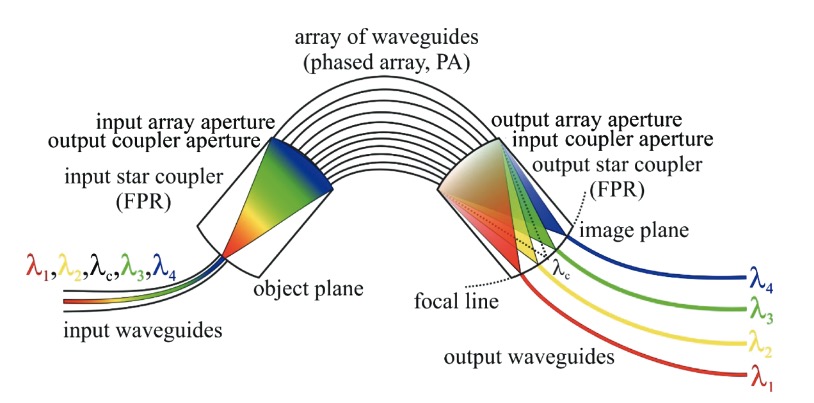
The Arrayed waveguide gratings (AWG) are commonly used as optical (de)multiplexers in wavelength division multiplexed (WDM) systems. These devices are capable of multiplexing a large number of wavelengths into a single optical fiber, thereby increasing the transmission capacity of optical networks considerably.
The devices are based on a fundamental principle of optics that light waves of different wavelengths interfere linearly with each other. This means that, if each channel in an optical communication network makes use of light of a slightly different wavelength, then the light from a large number of these channels can be carried by a single optical fiber with negligible crosstalk between the channels. The AWGs are used to multiplex channels of several wavelengths onto a single optical fiber at the transmission end and are also used as demultiplexers to retrieve individual channels of different wavelengths at the receiving end of an optical communication network.
Different AWG types
Various AWGs are available on the market today and their optical characteristicsdepend largely on the optical properties of the waveguide materials used. AWGscan be fabricated on various material platforms such as silica-on-silicon (SoS) buried waveguides, silicon-on-insulator (SOI) ridge waveguides,SOI-nano-wires, buried InP/InGaAsP ridge waveguides, polymer waveguides, or Si3N4waveguides. In terms of material, they can all be divided into twomain groups, the so-called low-index-contrast and high-index-contrast AWGs.





